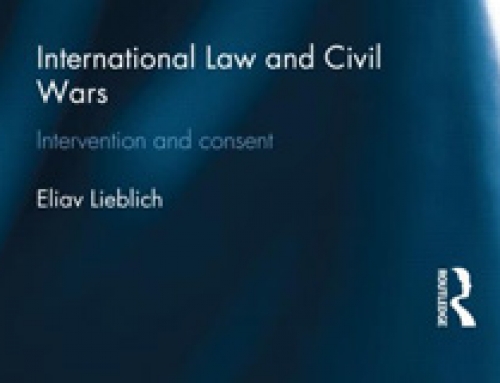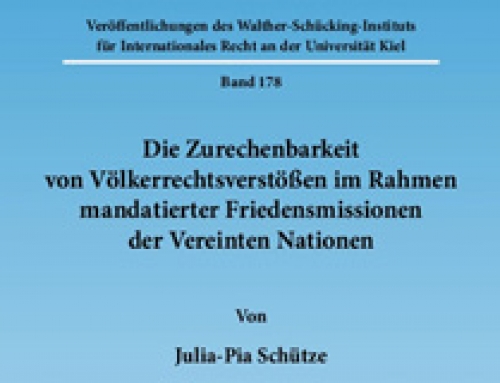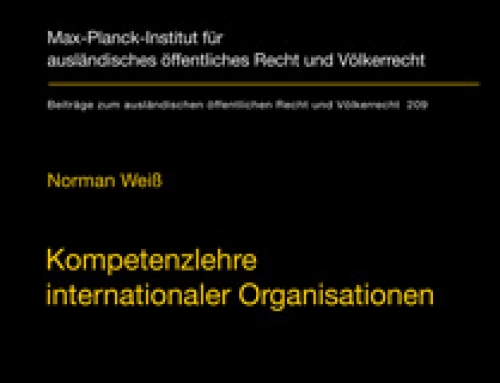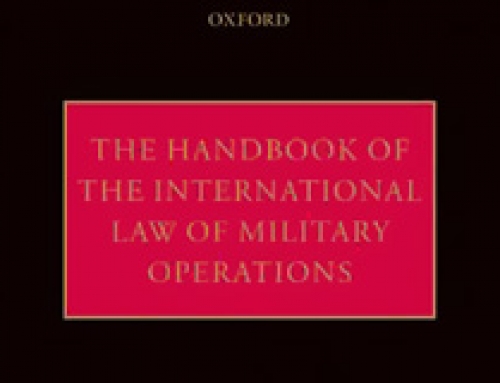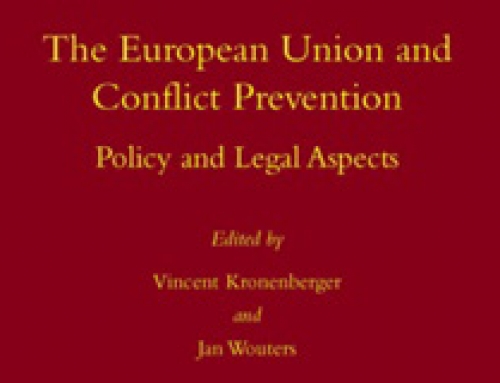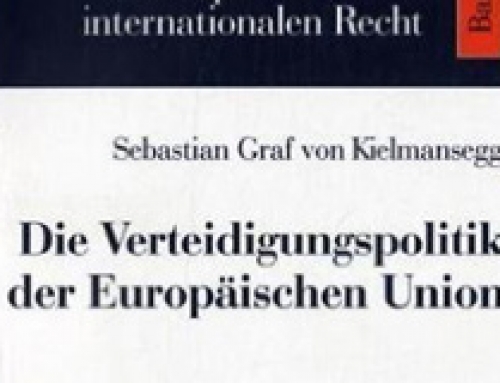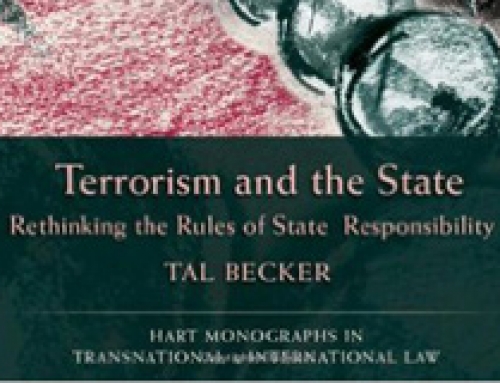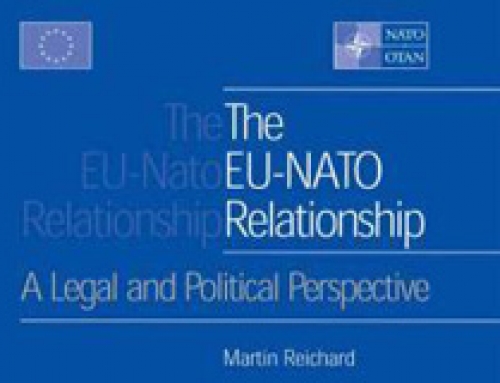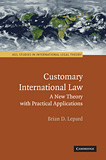
Brian D. Lepard, Customary International Law: A New Theory with Practical Applications, Cambridge: Cambridge University Press, 2010. ISBN: 9780521191364, £70 (hb), ISBN: 9780521138727, £38 (pb) pp. xx + 419.
The concept of customary international law must surely be counted among the more difficult, if not outright enigmatic, topics of international law. Uncertainties abound on almost every aspect of custom,1 including its formation, change and extinction, the relationship between its two constituent elements and its legal character. For instance, it is unclear how many States are needed to create a rule of customary international law. Nor is there agreement on what role State consent plays in the formation of customary rules, how one is to determine the existence of the subjective element of custom, opinio juris, or what its relative weight should be in relation to its objective element, State practice. It is not surprising, therefore, that customary international law makes for a perfect case-study in the indeterminacy of international law more generally, leading Martti Koskenniemi to proclaim that ‘modern legal argument lacks a determinate, coherent concept of custom.’2 This is certainly not for the lack of trying. Despite occasional warnings about its imminent demise as a source of international law, in recent decades commentators have turned out a steady supply of articles, textbook chapters, special courses and monographs on the mysteries of customary international law.
Customary International Law: A New Theory with Practical Applications by Brian D. Lepard of the University of Nebraska is the latest addition to this body of literature. The purpose of the book, which is the second instalment of the ASIL Studies in International Legal Theory series launched in 2009, is to develop a comprehensive and consistent theory of customary international law that resolves some of the conceptual and practical difficulties noted above. At the heart of this new theory lies a novel definition of custom: according to Lepard, a norm of customary international law ‘arises when states generally believe that it is desirable now or in the near future to have an authoritative legal principle or rule prescribing, permitting, or prohibiting certain conduct’ (p. 8). This definition places the emphasis firmly on opinio juris. Lepard suggests that the requisite belief of States is sufficient to create a customary norm, regardless of whether it satisfies a separate requirement of consistent practice. In fact, he urges us to rethink the concept of customary international law in a way that, essentially, does away with State practice as a separate constituent element. Instead, State practice should be considered as evidence for the existence or non-existence of opinio juris, that is the belief by States that it is desirable to establish, now or the near future, an authoritative rule of law.
Lepard’s principal aim is to offer an interpretative framework that better resolves the conceptual contradictions and difficulties of customary international law than the traditional theories do. Of course, in doing so, he is not the first to recommend that one of the two traditional elements of custom should be discarded in favour of the other.3 What, then, justifies his claim that his is a ‘new’ theory? Above all, it is the adoption of a more refined understanding of the level of proof required to demonstrate the existence of opinio juris.
To better understand the nature of customary law, Lepard suggests that it is helpful to clarify the concept of legal authority and, more specifically, the sense of obligation that motivates compliance with legal norms. Relying on the work of legal philosophers, including that of Joseph Raz, he first draws a distinction between mandatory norms that have binding authority and therefore demand full compliance and norms that have persuasive authority and therefore only partially pre-empt other reasons motivating an actor’s behaviour. Adopting this more nuanced view of the pre-emptive effect of legal norms implies not only that the impact of different customary norms on the behaviour of States is not uniform, but also that this gradation in their authority does not call into question their quality as rules of law. Recognizing that legal rules may have either binding or persuasive authority thus yields a more inclusive definition of what constitutes a norm of customary international law.
Second, Lepard suggests that one key reason motivating actors to accept authoritative rules of law is their desire to facilitate collective action among themselves. He relies on game theory to establish a series of presumptions about the desirability of instituting authoritative rules to resolve different coordination problems in situations where States have not clearly expressed their views on the need for such rules. For instance, in the case of harmony games, where the actors are capable of achieving an optimum outcome regardless of the each others’ decisions, authoritative rules are not necessary to ensure their mutual cooperation. One can therefore safely assume that States generally are reluctant to develop customary norms in such circumstances. By contrast, authoritative rules may help to resolve a prisoner’s dilemma, that is a situation where a strong incentive exists for individual actors to defect from cooperation. In such cases, it can be presumed that States consider customary norms to be desirable as long as they are backed by credible sanctions capable of ensuring continued compliance.
Third, Lepard proceeds to add an ethical dimension to his concept of customary international law. In his view, it is necessary to refer to moral principles when determining the existence of custom, partly because existing customary rules are often inspired by ethical principles and partly in order to encourage the development of norms that reflect the moral aspirations of the international community. Accordingly, he proposes that we should rely on fundamental ethical principles supported by international legal texts for ascertaining and making presumptions about the views of States where these are unclear. If an alleged norm directly and significantly furthers fundamental ethical principles, this should give rise to a presumption that States desire to establish it as an authoritative rule of law, whereas if an alleged norm conflicts with fundamental ethical principles, this should give rise to a contrary presumption.
The significance of the foregoing arguments is that they enable Lepard to adjust the level of evidence required to prove the existence of opinio juris depending on the nature of the norm, its content and context. Since customary norms having persuasive authority do not necessarily demand full and absolute compliance, the evidence needed to support a claim that States have agreed to abide by such norms need not be as compelling as in the case of customary norms having a binding or pre-emptive character. Thus, Lepard can convincingly argue that the ‘Universal Declaration [of Human Rights] and other evidence point to a belief by States that they have a strong persuasive legal obligation to protect all the rights it proclaims’ (p. 327), whereas the same evidence would not suffice to sustain an argument that States have agreed to be fully bound by the Universal Declaration. Similarly, the various presumptions established about States’ views concerning the desirability of initiating customary norms permit him to fine-tune some of the criteria traditionally applied to State practice as an element of custom. For example, a higher degree of uniformity in State practice should be required in situations perceived by States as prisoner dilemmas, as the establishment of an authoritative rule to resolve the dilemma is not the preferred outcome of any State. In the case of coordination problems there is no need to insist that practice should be of substantial duration, as the purpose of adopting authoritative norms to address such problems is to settle on one option out of a range of alternative solutions quickly.
The theory sketched here has much to commend it. International lawyers and courts frequently rely on untested assumptions about the position of State practice and opinio juris at the expense of carrying out detailed investigations into these matters. The International Court of Justice is certainly no stranger to this. In essence, what Lepard’s new theory offers is not a sliding scale between State practice and opinio juris, more of one compensating for less of the other,4 but a more sophisticated matrix of rebuttable presumptions about the level of evidence required to demonstrate the existence of opinio juris in circumstances where States have not made their own views clear. The theory is both descriptive and prescriptive in the sense that it promises a better analytical understanding of existing practice, but also one that does not stifle the progressive development of new norms through legal reasoning.
At the same time, the book does suffer from certain weaknesses. Lepard adopts an uncompromisingly State-centric view that relegates the role of international organizations in the formation of customary international law to that of mere spectators. While he recognizes that international organizations serve as a convenient vehicle for State practice, there is no systematic appreciation that international organizations are also bound by customary international law and as such contribute to the formation of custom in their own right. Although the distinction between persuasive and binding norms captures an important dimension of law which a strictly binary view of customary international law as either ‘law’ or ‘non-law’ cannot, the difference in the legal impact of these two types of authoritative norms could have been explored in greater detail. As it stands, the concept of persuasive and binding norms at times seems to mask nothing more than a distinction between norms imposing strict obligations of result and norms imposing looser obligations of process. Some may also take issue with the ethical aspects of Lepard’s theory, in particular the way in which he places the principle of ‘unity in diversity’ at the heart of the international legal system, while others may disagree with reducing the traditional two-element concept of customary international law to a single element.
To be fair, none of these maladies are incurable. In particular, it is worth emphasizing that Lepard does not suggest that we should ignore State practice altogether, but only that we should regard it as an integral aspect of opinio juris rather than as a separate, self-standing element. In principle, this approach should not be too controversial: the traditional theory does not insist on opinio juris as a separate element of custom either, but as proof of a certain type of State practice, namely practice performed out of a sense of legal obligation. Lepard’s theory may be at its most useful if understood as a contribution towards establishing more robust standards of proof of opinio juris. It is also worth noting that the book adopts a Dworkinian perspective in the hope of constructing a theory that best explains, justifies and interprets the concept of customary international law in a coherent fashion (see p. 11). It is meant to offer a better, not necessarily a flawless, depiction of the subject. Indeed, if Koskenniemi is to be believed, our theories of custom are forever condemned to hover between normativity and concreteness, perpetually collapsing from one opposite into the other. On this account, a unified theory of custom is an ideal at best and a chimera at worst that we must keep chasing, but will never see fulfilled. Be that as it may, Customary International Law: A New Theory with Practical Applications contains some excellent ideas, in particular about utilizing insights from game theory, and makes a valuable contribution to the existing literature. However, those of us who have recently set exam questions on the riddles of customary international law can rest assured that not even this book will solve them all.
Published in the Leiden Journal of International Law.
1 J. Kammerhofer, ‘Uncertainty in the Formal Sources of International Law: Customary International Law and Some of Its Problems’ (2004) 15 EJIL 523, at 551.
2 M. Koskenniemi, From Apology to Utopia: The Structure of International Legal Argument (2nd edn, 2005), at 409.
3 In his famous article on instant custom, Bin Cheng suggested that ‘international customary law has in reality only one constitutive element, the opinio juris’. See B. Cheng, ‘United Nations Resolutions on Outer Space: “Instant” International Customary Law ?’ (1965) 5 Indian J Int’l L 23, p. 36. Maurice Mendelson, by contrast, sees ‘no particular reason to insist on proof of the presence of opinio juris’ in clear-cut cases. See M. H. Mendelson, ‘The Formation of Customary International Law’ (1998) 272 RdC 155, p. 292.
4 F. L. Kirgis, ‘Custom on a Sliding Scale’ (1987) 81 AJIL 146. For a more refined, but similar approach, see A. E. Roberts, ‘Traditional and Modern Approaches to Customary International Law: A Reconciliation’ (2001) 95 AJIL 757.


